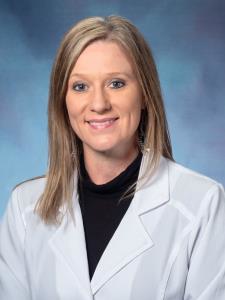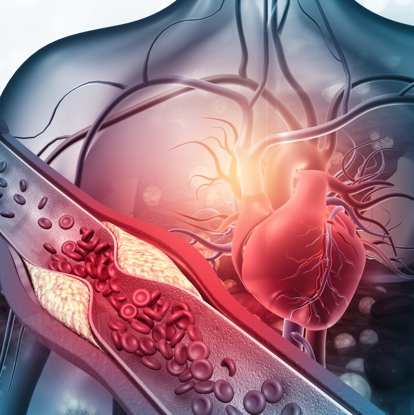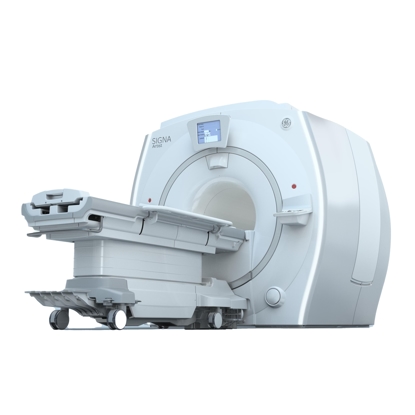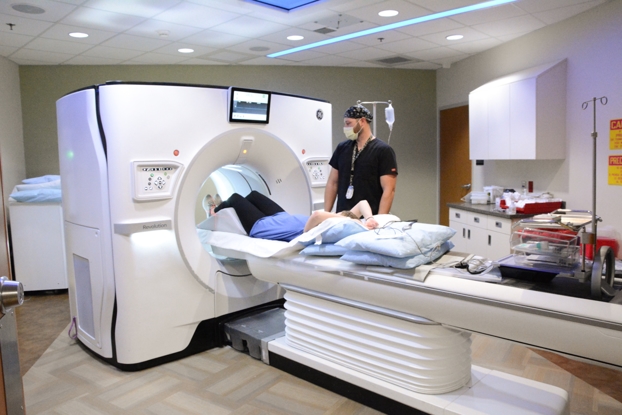
Risk Factors & Warning Signs
Risk Factors
Not only is it important to recognize the signs of a heart attack as well as what to do in that instance, it is also important to focus on prevention. Knowing your risk factors and modifying any lifestyle behaviors that might put you at greater risk can help minimize the occurrence of a heart attack. Risk factors include:
- Smoking
- Lack of exercise
- Obesity
- Elevated cholesterol
- High blood pressure
- Diabetes
- Stress
- Family history of heart disease
- Diet high in fat
It is important to know your risk of heart disease and heart attacks and to begin modifying your lifestyle to prevent damage to your heart.
Risk factors can be inherited tendencies or learned habits that may increase your risk of having heart disease or speeding up the process. Studies have identified two types of risk factors: uncontrollable and controllable.
Uncontrollable Risk Factors
These are risk factors that are not within our control.
- Heredity – A parent, brother or sister has had coronary heart disease, a heart attack or coronary surgery (before age 55 in men and before age 65 in women).
- Advancing Age – Men above the age of 55-60 and women 65 and older. People age 20 and older should see a doctor every five years to assess risk factors such as smoking, family medical history and blood pressure. People age 40 and older should be screened for additional risk factors, such as blood pressure and total cholesterol.
- Gender – Males continue to be at a higher risk for having heart disease before the age of 65.
Controllable Risk Factors
The controllable are those risk factors we are able to manage with our lifestyle.
- Smoking – Cigarette smoking is the leading risk factor for sudden cardiac death. Smokers have two to four times the risk of nonsmokers. According to the Framingham Heart Study, nonsmokers live seven to eight years longer than a smoker. Second-hand smoke is considered as big a risk factor as smoking.
- High Blood Pressure – Called the "silent killer" since it has few observational symptoms. Normal blood pressure recommendation for all individuals is 120/80 or below. Continued high blood pressure can cause damage to the artery walls and increase the cholesterol buildup, causing plaque (atherosclerosis) in the artery. It also can lead to heart failure.
- Abnormal Blood Lipids (cholesterol levels) – Cholesterol is a fat-like substance found in our cells. It is necessary for cell development. Our bodies produce cholesterol, and we also obtain it in our diets by eating animal foods, such as meat, eggs and dairy products. High cholesterol contributes to the build-up of plaque in the artery walls. Recommended total cholesterol is below 200. The ideal is less than 160. The optimal LDL (known as the bad cholesterol) level is less than 70. HDL (known as the good cholesterol) optimal levels should be above 40.
- Overweight – Excess weight can increase your risk for having heart disease. Men who have a waistline of 40 inches or more and women 35 inches or more are at higher risk.
- Physical Inactivity – People who are inactive are at a greater risk for having heart disease. Regular physical activity can help reduce your risk of heart disease, shed extra pounds, control blood pressure, lower blood cholesterol levels and assist with maintaining emotional wellness. Being physically active at least 30 minutes a day is recommended by the American College of Sports Medicine and the Centers for Disease Control and Prevention and the American Heart Association.
- Uncontrollable Diabetes – Diabetes, or high blood sugar, can significantly increase the risk of coronary heart disease. Eighty percent of diabetics die from some form of cardiovascular disease. Maintaining a blood sugar level below 110 is important.
- Reaction to Stress – Stress may be the greatest single cause of illness in our world. Stress events are often unavoidable, but how we deal with that stress is important to our health. Prolonged emotional stress is likely to accelerate the build-up of plaque along artery walls, cause blood cholesterol and blood pressure to rise and increase susceptibility to illness. Learning to manage stress is essential. Types "A" with the "hot reactor" personalities have a tendency to have a higher risk for heart disease.
Warning Signs and Symptoms
There are, frequently, specific signs and symptoms of a heart attack that are fairly easy to recognize. These symptoms include:
- Chest discomfort. Most heart attacks involve discomfort in the center of the chest. The discomfort lasts for more than a few minutes, or it may go away and come back. The discomfort may feel like pressure, squeezing, fullness or pain.
- Discomfort in other areas of the upper body. This may include pain or discomfort in one or both arms, the back, neck, jaw or stomach.
- Shortness of breath may occur with or before chest discomfort.
Other symptoms may include breaking out in a cold sweat, nausea, or light-headedness. Treatments are most effective when they occur in the early stages of chest pain. The above-mentioned symptoms usually occur but occasionally patients experience other symptoms of a heart attack that are not as obvious or well known. Women, in particular, can experience symptoms that are harder to diagnose. These symptoms include:
- Upper abdominal pressure or discomfort
- Lower chest discomfort
- Back pain
- Unusual fatigue
- Unusual shortness of breath
- Dizziness
When to Seek Help
If any of the symptoms of a heart attack occur to you or your family member, it is of most importance that you call 9-1-1 within five minutes. Calling 9-1-1 should always be the first option before driving yourself or your loved one to the hospital. The 9-1-1 operator has the ability to inform the emergency response team of a chest pain or heart attack call, which is priority over many other situations. This ensures the ambulance and fire truck are sent to you first.
The emergency medical teams are specifically trained to recognize and treat patients who are experiencing a heart attack, and you can be receiving treatment while en route to Hendrick rather than delaying it by driving yourself. The Emergency Medical Service (EMS) in Abilene and Abilene Fire Department have the ability to transmit an ECG to Hendrick before the patient arrives. This allows Hendrick to activate the necessary measures to provide all of our heart attack patients with prompt treatment and to spare damaging heart muscle.
-
Lindsey Crowe, FNP
CardiologyView Profile
-
Evan L.. Hardegree, MD
CardiologyView Profile
-
Udaya S.. Swarna, MD
CardiologyView Profile
-
Aref Obagi, MD
CardiologyView Profile
-
Olivia R.. Graham-Williams, FNP
CardiologyView Profile
-
Farley B.. Neasman, MD
CardiologyView Profile
-
Sheryl S.. Rolle, NP
CardiologyView Profile
-
Mark E.. Lawrence, DO
CardiologyView Profile
-
Kristan E.. Swiney, NP
CardiologyView Profile
-
Haider S.. Alwash, MD
CardiologyView Profile




















